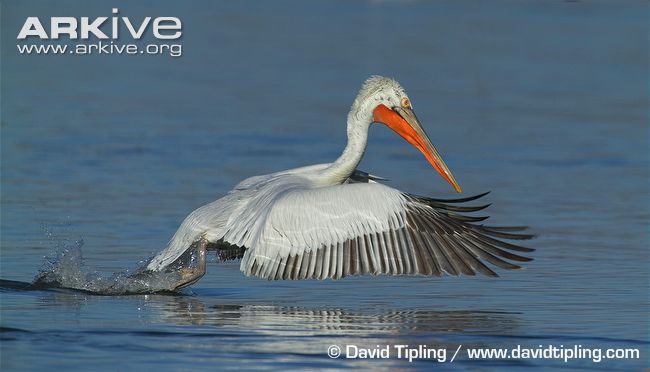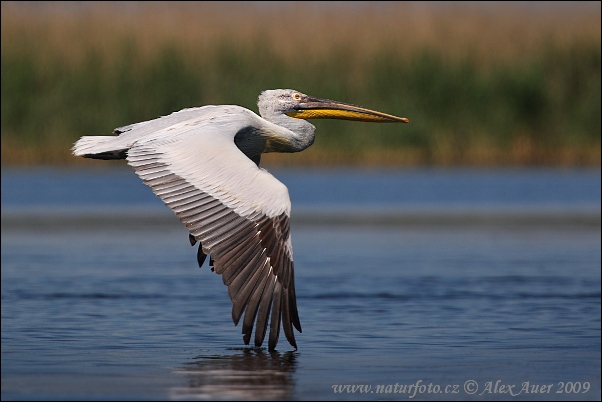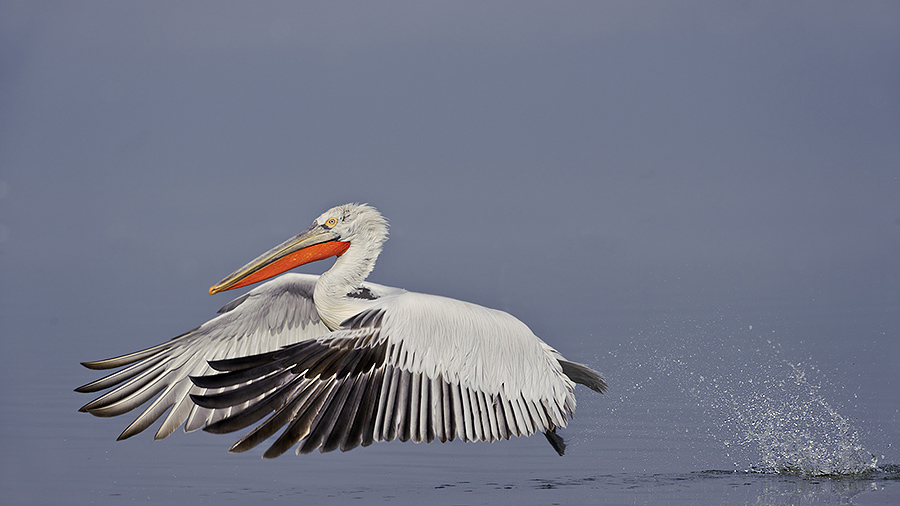
Pelecanus crispus
TAXONOMY
Pelecanus crispus Bruch, 1832, Dalmatia. Monotypic.
OTHER COMMON NAMES
English: Curly-headed pelican; French: Pйlican fris; German:
Krauskopfpelikan; Spanish: Pelнcano Ceсudo.
PHYSICAL CHARACTERISTICS
Large birds, 63–71 in (160–180 cm); 20–29 lb (9–13 kg); male
larger than female. Silvery-white shaggy or curly crest and
brownish black wingtips.
DISTRIBUTION
Breeds locally from southeastern Europe to China. Winters
from the Balkans through southeast China.
HABITAT
Lakes, rivers, deltas, and estuaries where human disturbance is
minimal. Breeds on islands or among tall emergent vegetation.
BEHAVIOR
May display antagonistic
BEHAVIOR
in the form of bill clattering
and gaping, especially when defending nest sites. Male emits
hisses and spitting sounds in concert with bowing display during
courtship.
FEEDING ECOLOGY AND DIET
Less likely than other big pelicans to fish in large flotillas; usually
feeds alone, in pairs, or in trios. Takes a wide variety of
both freshwater and marine fish, including eels (Anguilla), carp
(Cyprinus and Carassius), and rudd (Scardinius).
REPRODUCTIVE BIOLOGY
Breeds in smaller colonies than many other large pelicans. Onset
of breeding varies widely depending on climate; may be as
early as February or as late as August. Nests are constructed
from plant material and bonded with excreta and frequently exceed
3 ft (1 m) in height and diameter. Two eggs are typically
laid and incubated for 31–34 days. Chicks are hatched naked
but develop white feathers within a month. Nestlings aggregate
in crиches by seven weeks of age; fledge at 12 weeks; independent
at 15 weeks.
CONSERVATION STATUS
Downlisted from Vulnerable to Conservation Dependent by
BirdLife International at the close of the twentieth century.
General population decline accelerated dangerously in the
twentieth century due to reduction of wetland habitat, hunting,
and overall human molestation including purposeful eradication
by fishermen. Comprehensive conservation measures in
Europe, including reintroduction of zoo-bred birds, are beginning
to show results.
SIGNIFICANCE TO HUMANS
Prone to disturbance by tourists. Blamed for reduction in fish
stocks. Bills are prized by traditional Mongolian herders who
continue to hunt them.
Other popular Animals
Photo Gallery of - Dalmatian pelican




 Animalia Life
Animalia Life